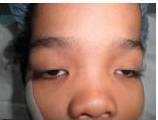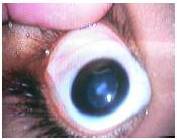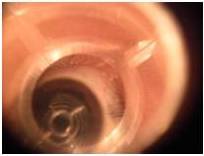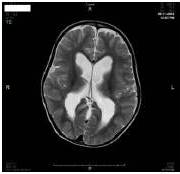Baujat, G. & Cormier-Daire, V. (2007). “Sotos Syndrome,” Orphanet Journal of Rare Diseases, 2, 36.Publisher – Google Scholar
Cole, T. R. & Hughes, H. E. (1994). “Sotos Syndrome: A Study of the Diagnostic Criteria and Natural History,” Journal of Medical Genetics, 31(1), 20-32.
Publisher – Google Scholar
Douglas, J., Hanks, S., Temple, I. K., Davies, S., Murray, A., Upadhyaya, M., Tomkins, S., Hughes, H. E., Cole, T. R. & Rahman, N. (2003). “NSD1 Mutations are the Major Cause of Sotos Syndrome and Occur in Some Cases of Weaver Syndrome but are Rare in Other Overgrowth Phenotypes,” The American Journal of Human Genetics, 72(1), 132-43.
Publisher – Google Scholar
Douglas, J., Tatton-Brown, K., Coleman, K., Guerrero, S., Berg, J., Cole, T. R., Fitzpatrick, D., Gillerot, Y., Hughes, H. E., Pilz, D., Raymond, F. L., Temple, I. K., Irrthum, A., Schouten, J. P. & Rahman, N. (2005). “Partial NSD1 Deletions Cause 5% of Sotos Syndrome and are Readily Identifiable by Multiplex Ligation Dependent Probe Amplification,” Journal of Medical Genetics. 2005 Sep;42(9):e56.
Publisher – Google Scholar
Hook, E. B. & Reynolds, J. W. (1967). “Cerebral Gigantism: Endocrinological and Clinical Observations Of Six Patients Including a Congenital Giant, Concordant Monozygotic Twins, and a Child Who Achieved Adult Gigantic Size,” The Journal of Pediatrics, 70(6), 900-14.
Publisher – Google Scholar
Inokuchi, M., Nomura, J., Mtsumura, Y., Sekida, M. & Tagawa, T. (2001). “Sotos Syndrome with Enamel Hypoplasia: A Case Report,” Journal of Clinical Pediatric Dentistry, 25(4), 313-316.
Publisher – Google Scholar
Koenekoop, R. K., Rosenbaum, K. N. & Traboulsi, E. I. (1995). “Ocular Findings in a Family with Sotos Syndrome (Cerebral Gigantism),” American Journal of Ophthalmology, 119(5), 657-8.
Publisher – Google Scholar
Maino, D. M., Kofman, J., Flynn, M. F. & Lai, L. (1994). “Ocular Manifestations of Sotos Syndrome,” Journal of the American Optometric Association, 65(5), 339-46.
Publisher – Google Scholar
Nalini, A. & Biswas, A. (2008). “Sotos Syndrome: An Interesting Disorder with Gigantism,” Annals of Indian Acadademy of Neurology, 11(3), 190-2.
Publisher – Google Scholar
Opitz, J. M., Weaver, D. W. & Reynolds, J. F., Jr. (1998). “The Syndromes of Sotos and Weaver: Reports and Review,”American Journal of Medical Genetics, 79(4), 294-304.
Publisher – Google Scholar
Sotos, J. F., Dodge, P. R., Muirhead, D., Crawford, J. D. & Talbot, N. B. (1964). “Cerebral Gigantism in Childhood. A Syndrome of Excessively Rapid Growth and Acromegalic Features and a Nonprogressive Neurologic Disorder,” The New England Journal of Medicine, 271, 109-16.
Publisher – Google Scholar
Tatton-Brown, K. & Rahman, N. (2004). “Clinical Features of NSD1-Positive Sotos Syndrome,” Clinical Dysmorphology, 13(4), 199-204.
Publisher – Google Scholar
Winship, I. M. (1985). “Sotos Syndrome–Autosomal Dominant Inheritance Substantiated,” Clinical Genetics, 28(3), 243-6.
Publisher – Google Scholar
Yen, M. T., Gedde, S. J. & Flynn, J. T. (2000). “Unilateral Glaucoma in Sotos Syndrome (Cerebral Gigantism),” American Journal of Ophthalmology, 130(6), 851-853.
Publisher – Google Scholar








